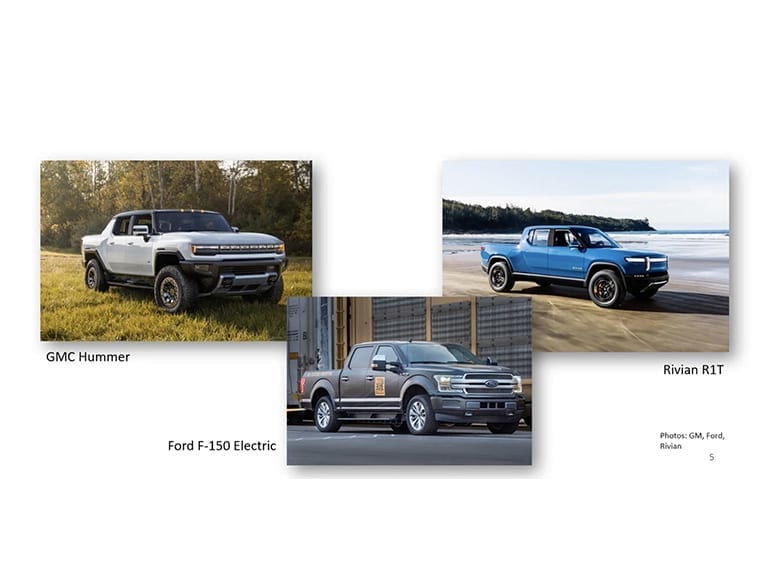As part of the Focus Electrification 2020 virtual forum, analysts took stock of the global electric vehicle market, particularly in light of the COVID-19 pandemic.
Wards Intelligence analyst Christie Schweinsberg opened the conversation by explaining that we are in the tenth year of the advent of the electric vehicle (EV) in the North American market. 2011 marked the introduction of the Chevrolet Volt Plug-in Hybrid and Nissan Leaf all-electric vehicles. While the global EV market share of total fleets worldwide is currently only about three percent, this percentage is expected to change dramatically over the next five to ten years.
Enriching the offer
It argues that manufacturers, initially focusing their offer on passenger cars, are gradually migrating to the light truck and SUV proposition, which is more attractive to the general public and fleet managers. This poverty of supply would explain the low penetration of the electric solution. But it does indicate that this is about to change, as automakers will offer a range of about 500 different EV models by the 2025 production year. “Manufacturers are already announcing electric vehicles in the full-size pickup truck, high-performance car and utility vehicle categories.
Examples include the GM Hummer, Ford F-150 and Riviran R1T, all-electric. On the sports car side, let’s mention the arrival of electric versions of the Taycan Porsches, the Volkswagen ID.4 and the Tesla Model Y.
In fact, Tesla is clearly at the top of the world EV sales charts. In the United States alone, Tesla sold 119,000 units out of a total of 154,000 all-electric vehicles from January to September 2020. Globally, the U.S. automaker sells twice as many cars as its nearest rival, Germany’s VW, and three times as many as China’s BYD.
Regulations
Another important element in the development of EVs is the application in several jurisdictions of regulations pushing for adoption. California is taking the lead in the U.S. by requiring the sale of only all-electric vehicles starting in 2035. This would even exclude hybrid and plug-in hybrid cars.
China has also made a radical shift, as only it knows the recipe, to increase the electrification of its car fleet to 50%, while the remaining half will have to be in hybrid mode. The Middle Kingdom wants 20% of the car fleet to be powered by electricity by 2025. This leads Schweinsberg to predict that by 2030 fully electric vehicles will account for 15% of the world market for light vehicles. Hybrids, on the other hand, are expected to account for 20 percent of the market in 2030.
On another level, Asian and Western companies alike are competing with renewed intensity to develop cheaper, longer-range batteries. Currently, China, Korea and Japan hold almost the entire market, but a manufacturer like Tesla wants better control of its supply by opening, among other things, a plant in Germany in 2022. The same phenomenon applies to the recovery and recycling of end-of-life batteries, where China currently dominates the market. But Tesla, Volkswagen and Audi are working on their side to gain market share in Europe and the United States.
The evolution of battery technologies and improving the range of EVs are among the most important drivers of adoption.
More terminals
Since a large part of the electric fleet is currently made up of rechargeable vehicles, the availability of the terminals remains a challenge. Combining Canada and the U.S., there are currently 32,000 Tier 2 and Tier 3 public charging stations. Of this total, only 5,000 are Tier 3 fast charging.
“In China, implementation is much faster, with between 500,000 and one million, depending on the source consulted,” explains the analyst. “The country will add 600,000 more by the end of the year, many of them along the highways. The Americans need a green plan to speed up the installation of kiosks, especially in markets where EVs are already popular.”
The Impact of COVID-19
Experts in the field note that the decline in sales of electric cars has been less significant than that of cars with combustion engines. According to Wards Intelligence analyst Haig Stoddard, in the second half of 2020 EV sales declined by 25 percent overall. But by the end of the year, it is expected to account for 90 percent of pre-COVID sales.
But according to him, the normal level of sales of this type of vehicle could only return to normal in two years.



